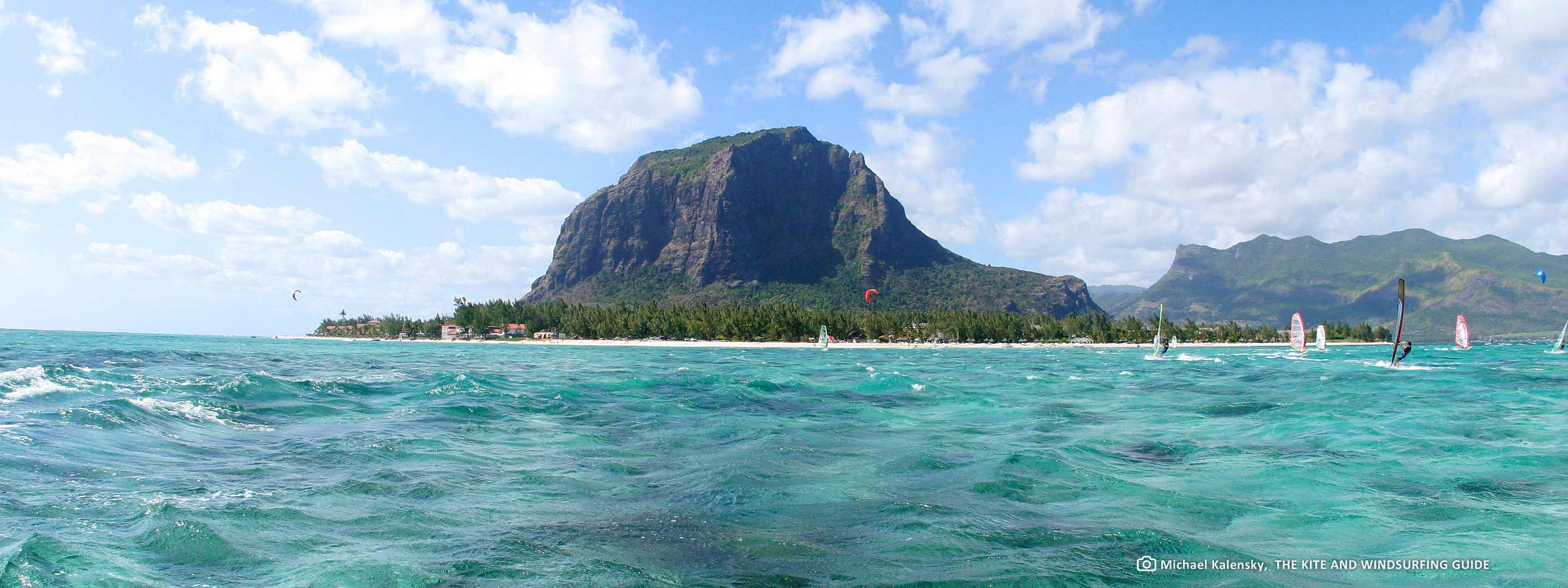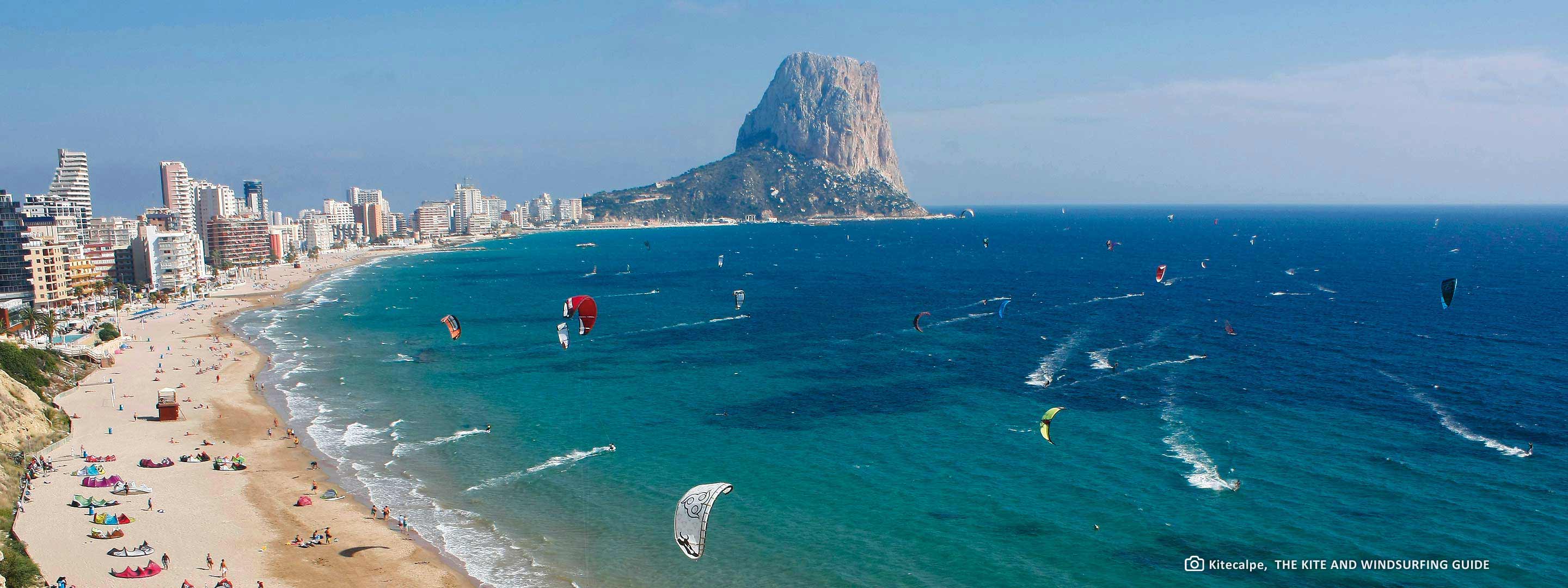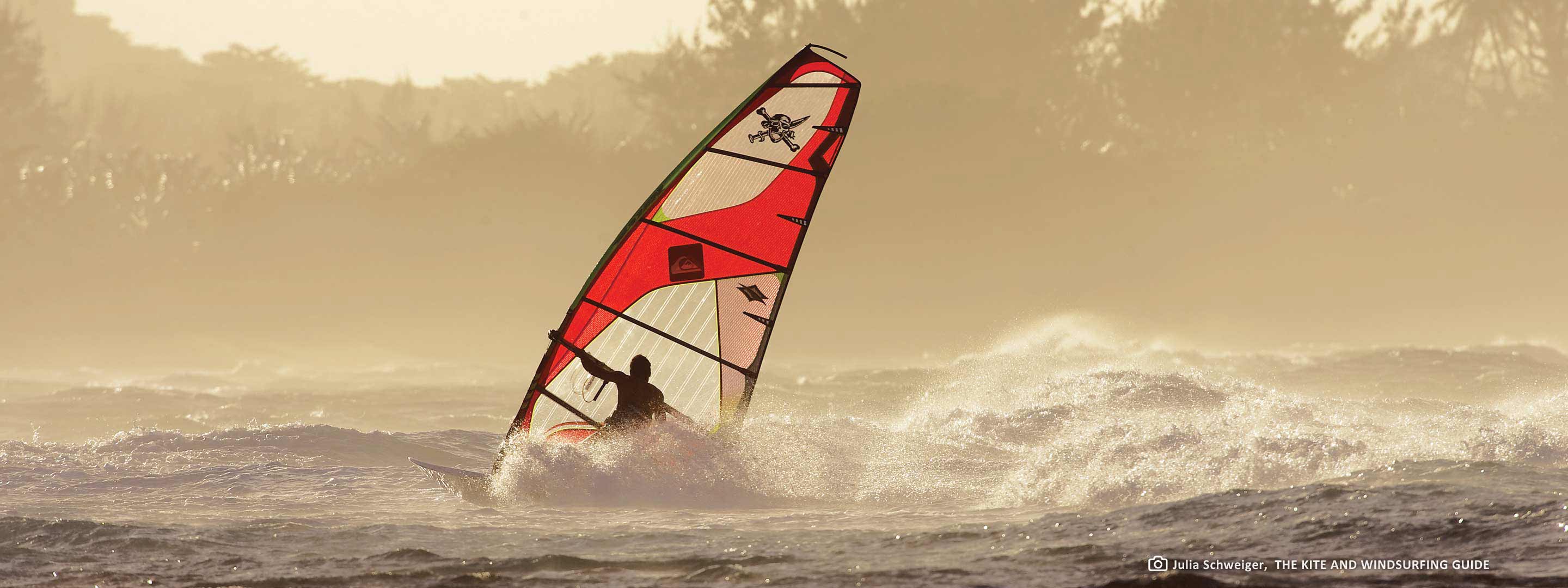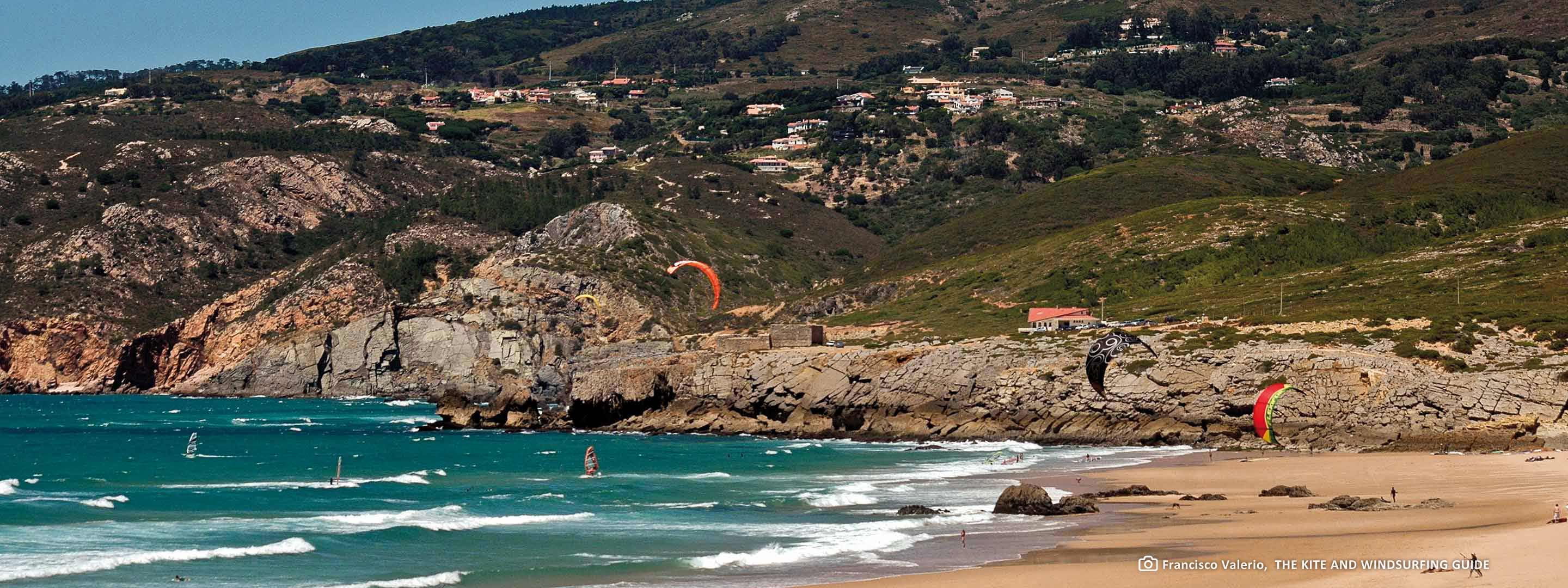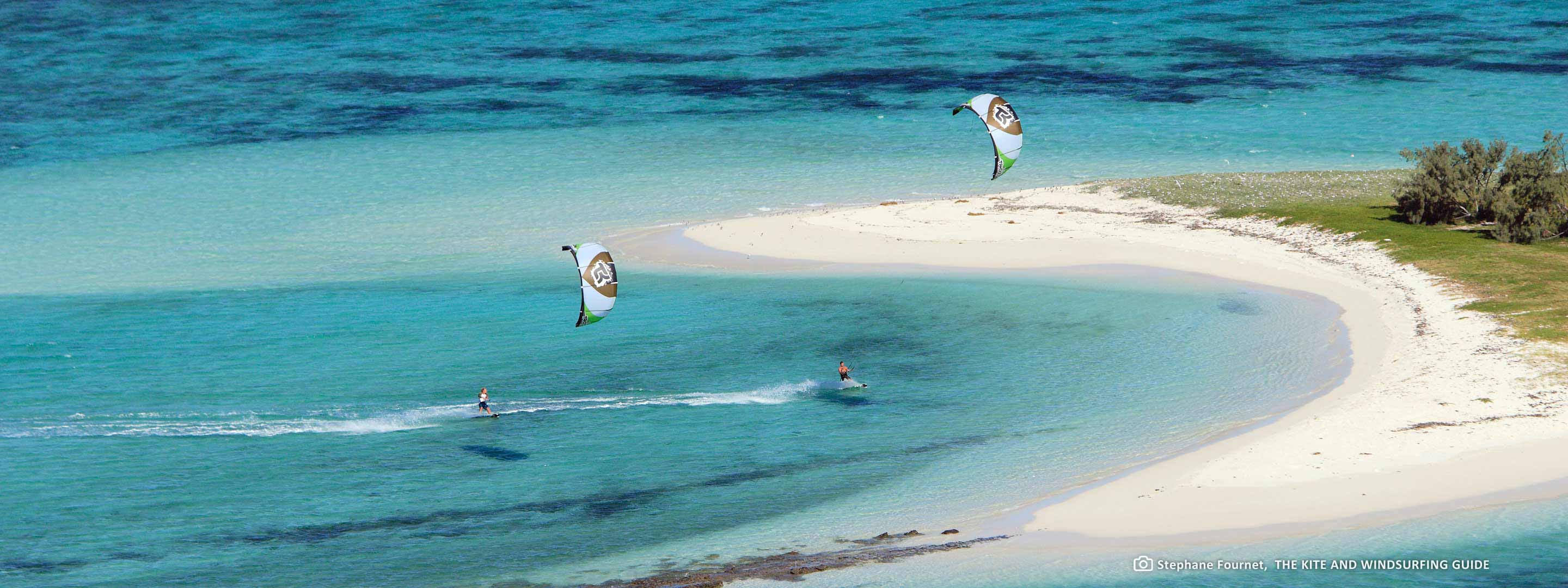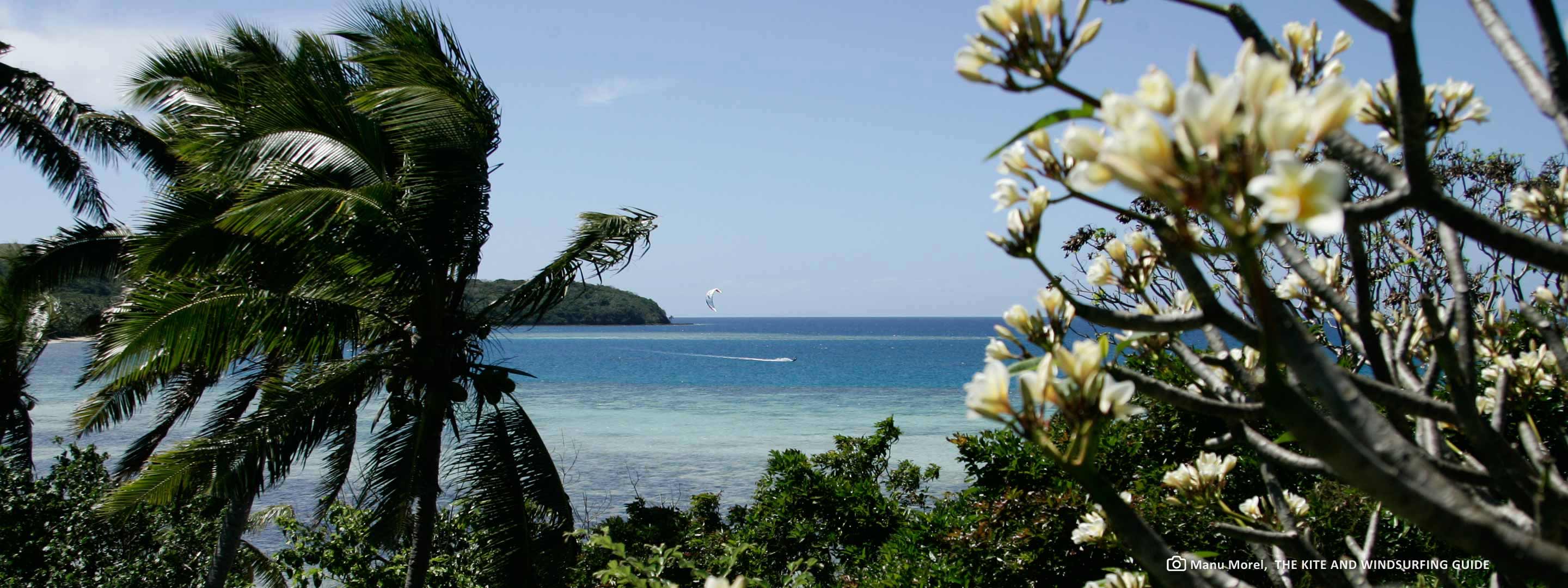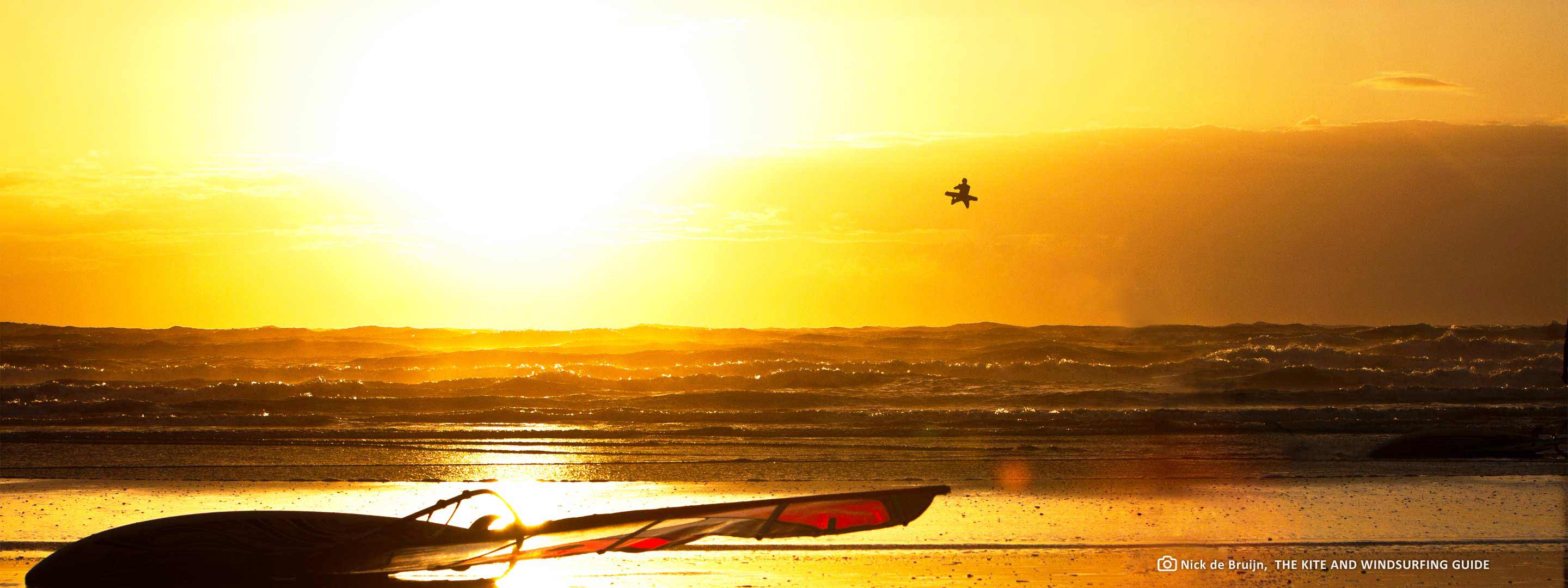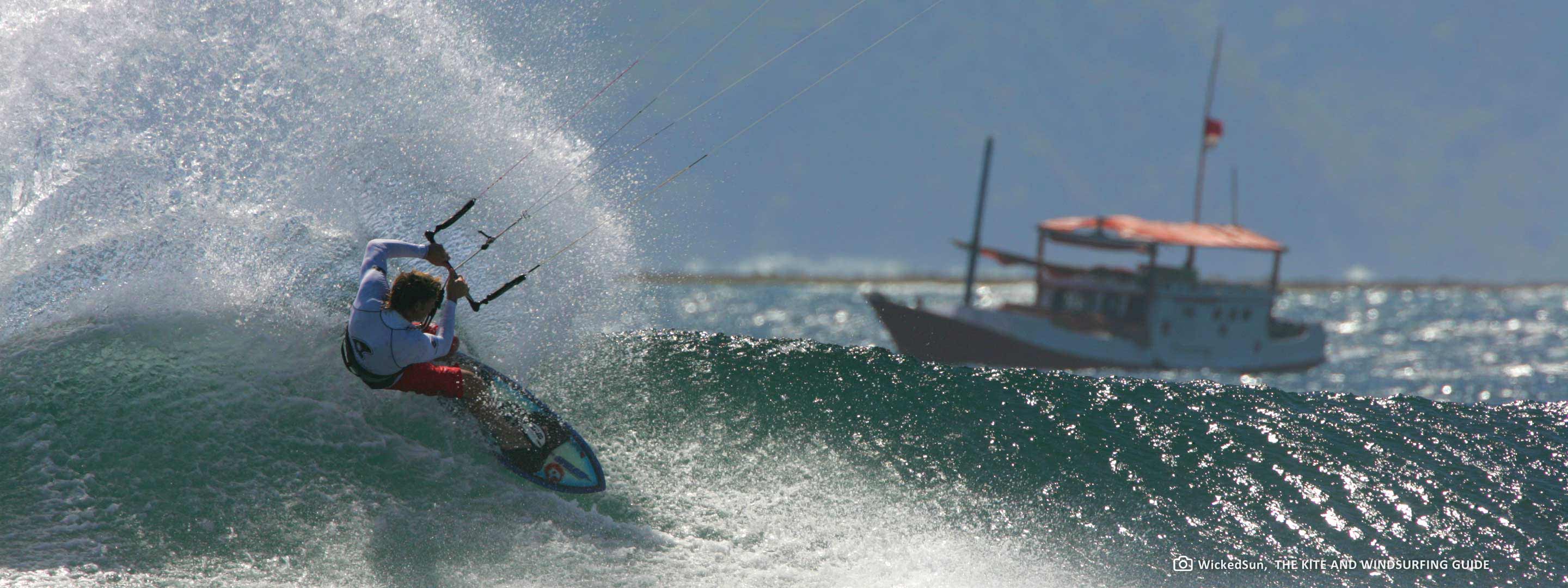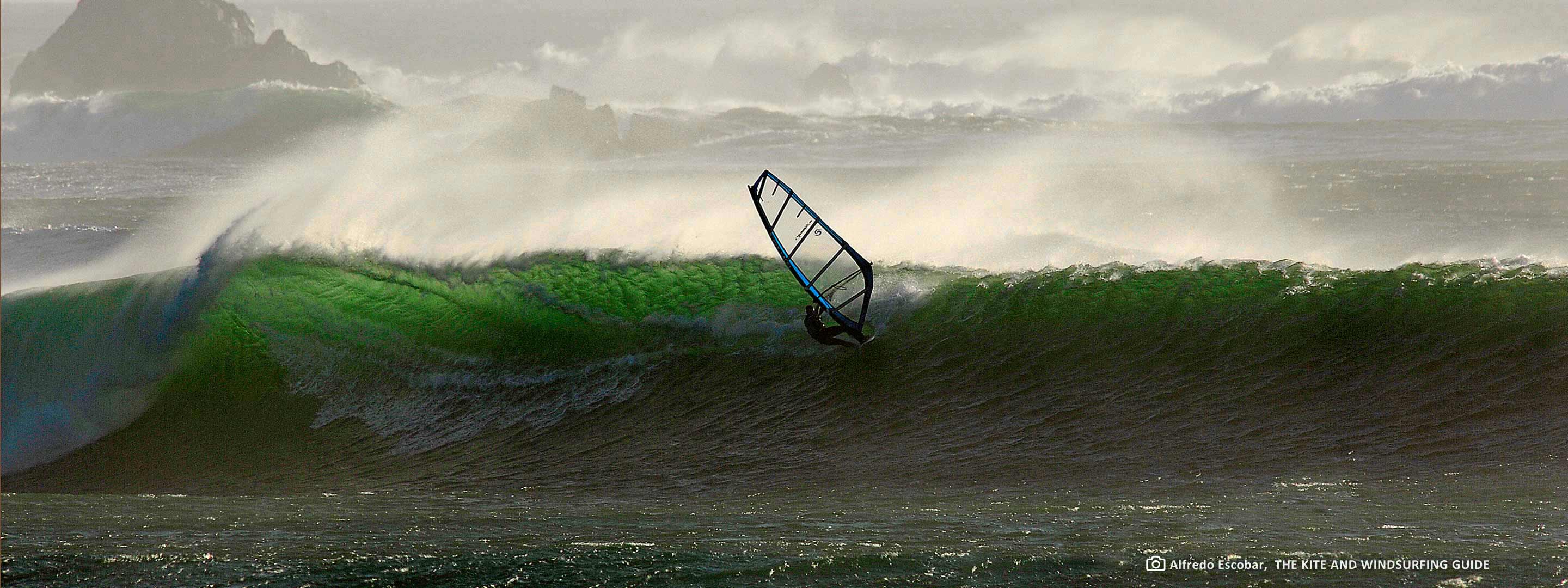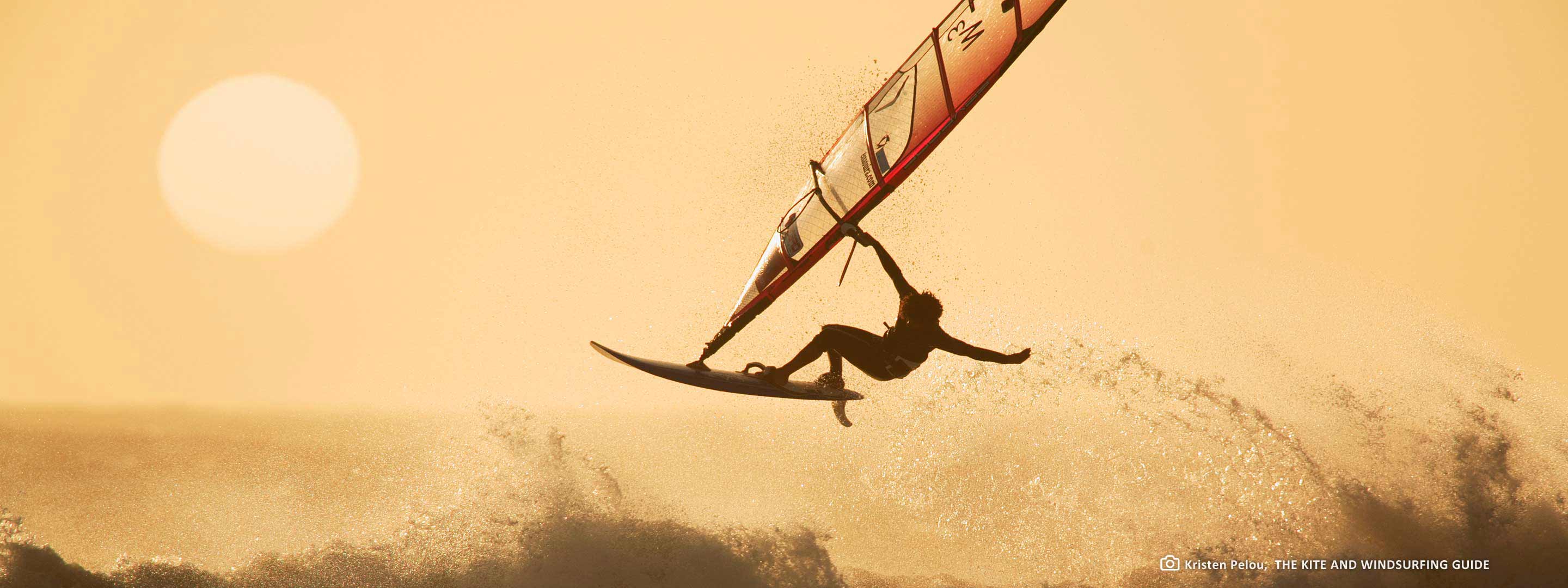Bell Buoy
Tasmania's North East
Auszug aus dem KITE AND WINDSURFING GUIDE:
Green Point Beach is great for getting into wavesailing. The dominant SW winds are perfect cross-shore, as good for jumping as they are for great, long, down-the-line rides on clean faces. 'Greens’ also works in NE, but only backside to the waves. Then it’s best to head for the right-hander Little Kirra at the north end of Nettley Bay – turn left just beyond the point. In SSW, sail at the south end of the bay where Quinten’s allows long rides with loads of turns. Once you’re dialled in, the big wave potential of the west coast awaits. At the foot of Mount Cameron is Thunder Reef – one of the area’s biggest waves, up to double mast-high on a 6m swell. Most people surf Thunder on 2m swell, but the wave only gets really long and clean from 4m. The channel provides sanctuary on small 2 to 3m days, but on a big day the strong undertow means it’s better to launch near the break. Back of Lighthouse also belongs in the XXL section. A very nice wave that tends to close-out near the end, so it’s not a break to practice on. Also needs WSW swell over 4m to fire. Launch over rocks, either from the small boardwalk in the south or in front of the shed at the north. Between Marrawah and Arthur River, Bluff Beach is a super-consistent beach-break that’s usually head-high but can be anything from hip to mast-high depending on the swell. South of here the notorious Bluff Reef delivers the region’s best-shaped wave, easily touching 6m on a good day. The rinse cycle takes some getting used to – just don’t panic and everything will be fine! It’s best as a right-hander in NNE-NE wind, SW is also sailable but any mistakes on the peak will cost dear. Arthur River estuary is a good choice for the rare days when it’s too small everywhere else, best in northerly wind. But don’t go out after heavy rain as big lumps of debris get swept downstream. With its steep waves, Furries is ideal for back-loops and can be logo-high while Bluff has 1.5m waves. Be careful: the currents can be very strong and there’s no rescue cover. Finally, Temma Harbour is Tasmania’s 'Jaws’. A massive right, that only works in 5m+ swell. Temma breaks in a deep channel but there’s such a lot of water moving around, you shouldn’t go out alone. Give Justin Tapson a call first! By Southern Ocean standards the waves aren’t big on the north coast facing the Bass Strait, which is just 50m deep. The Stanley Peninsula is especially interesting, offering somewhere for every wind direction and standard of rider. On West Beach the conditions vary from large bump-and-jump to down-the-line riding. In SW head 5km east to 'Hellfire Point’ at West Inlet within two hours of high tide. In NE wind cross the small land bridge to East Inlet, a speed strip at low tide and still mirror-flat at high. Caravan Park Beach also works in NE, flat or bump-and-jump depending on windstrength. Real waves can be found beyond the campsite at Godfrey’s Beach or 15km east in Port Latta. 'Peggs Beach’ is particularly good when strong NE windswell has built up. From here the coast gets rocky; the next possible launches are 'Burnie’ or 'Ulverstone’, then 'Port Sorell’. Hawley Beach is good for flat water blasting in NW at low tide, and gets waves at high water in NE. It’s worth driving to Georgetown in west winds. East Beach on Low Head can be really good after a couple of days of strong westerly, or 4km east Bell Buoy offers a very good Euro wave. In decent windswell it’s one of Tasmania’s best jumping spots. Plus it’s not too far from Launceston, just in case you’re yearning for town life again.
